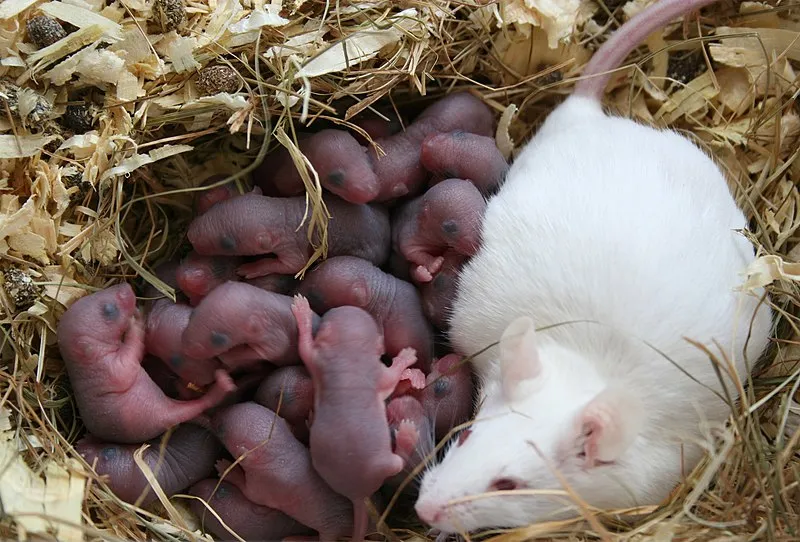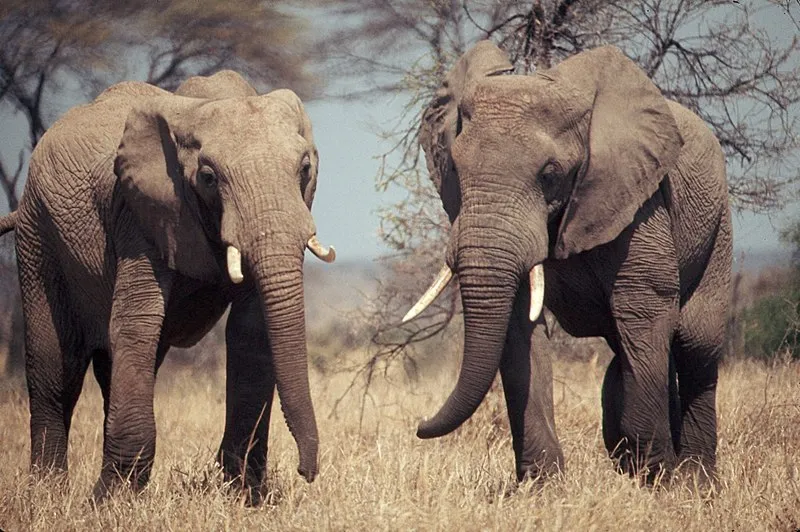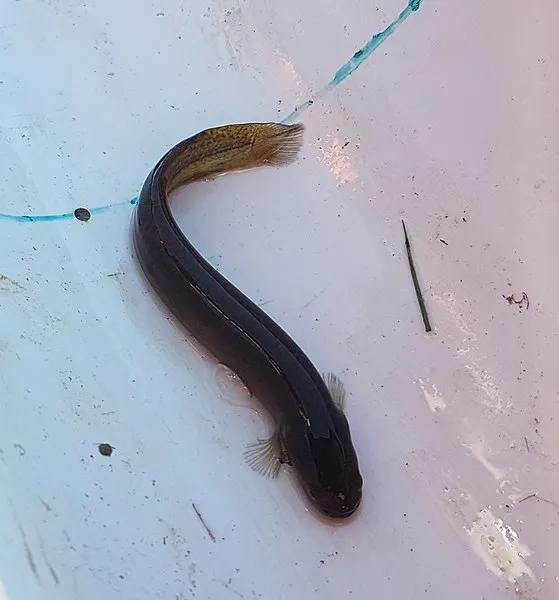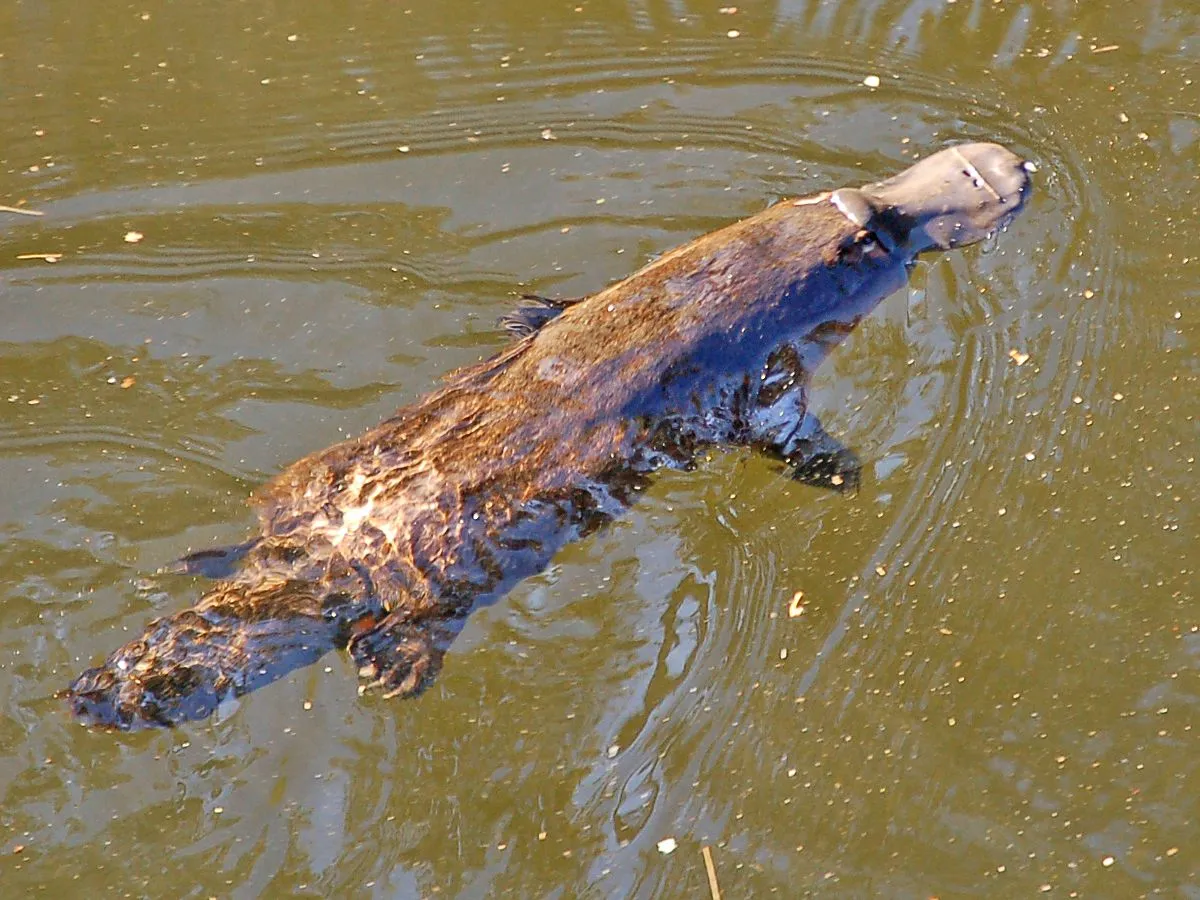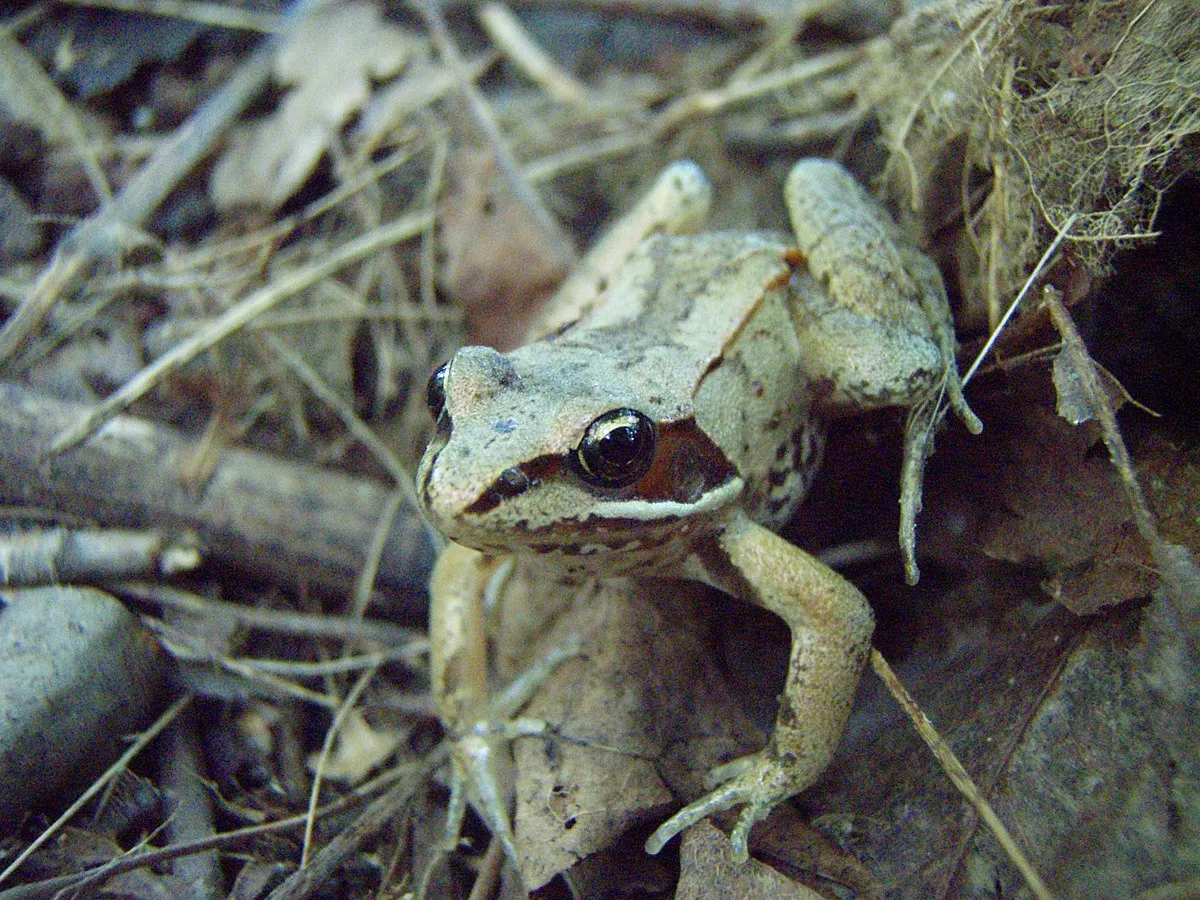Today's discussion promises to be more interesting than ever. I have got some exciting gist and proven scientific facts to share with us today as usual. Today, we drift a bit from our regular medical post and move into ecology.
How I got the inspiration to write this post was quite amazing. I was discussing with the Chief Security Officer of the hospital facility where I work currently about the nature of the fishes in the south east and he made mention of a particular fish that drew my attention; Mudfishes.
Some interesting thing he mentioned was their ability to survive for months under the soil (muddy soils in particular) without water. The thought of how animals and fish in particular, survive without water drove me into more research to find out basic things about this creatures. Luckily, I stumbled on a very interesting theory that to some extent backs all the major survival mechanism of most animals - The R and K survival theory or selection.
I am by no means an expert in this area I wish to delve into, regardless, I will be sharing my findings here. Reading this article will expose a whole lot about the survival mechanism of some selected animals, how they adapt and why some are already in extinction, why some animals have incredibly higher rate of reproduction than others etc. Feel free to enjoy.
Recalling the theory of natural selection as propounded by Charles Darwin:
More individuals are produced each generation that can survive. Phenotypic variation exists among individuals and the variation is heritable. Those individuals with heritable traits better suited to the environment will survive.
The simple summary of the above is that, those who cannot survive amidst the difficult times are phased out while those who are strong enough to survive, continues to live. It is a battle for the strong and not for the weak. This law is somewhat related to the r and K selection theory but with little deviation. r and K strategy aims at helping us understand those inherent strategies employed by living creatures for survival.
There is a reason why humans reproduce differently as when compared to other living creatures, for example, rats, and dogs. The r and K theory tries to make us understand to a greater extent why the above happens.
No matter how strong a threat is to an ecosystem, there will always be a survival strategy employed by living things inhabiting it. The goal has always being to preserve their life and procreate. As small as insects are, they still try to survive amidst life threatening challenges.
Most smaller animals are able to speedily increase their population because of their susceptibility to death through any means. Insects for example reproduce in a very large amount as compared to animals.
The r and K concept was introduced in the 1960s by two ecologists by name Robert MacArthur and E. O. Wilson. Gradually lost its relevance as more understanding of living things began to unfold. The theory though not totally rejected, still has some important application and relevance in the study of bacteria and living things growth pattern.
Lets get a better and in-depth understanding of the r and K selection theory also known as r and K reproductive strategies by living creatures.
r and K selection
the r and K are the two major strategies employed by some living creatures for survival. It bothers mostly on the stability or instability of the organism or animal's environment. You might be wondering what the meaning of the r and K are and where they came from? They are simply used to explain the population growth graph pattern of two types of organisms - those that live in an unstable environment (r) and those that live in a stable environment (K).
The r strategists
The r strategists are usually smaller organisms. Naturally they have the ability to reproduce in larger amount because the energy required for this is very low. You find them mostly in environment where their is high probability or highly unpredictable changes in the environment.
Since the odds are against them and they are mostly not certain of what tomorrow hold for them, they reproduce as fast as possible in large amount to ensure that their progeny (offspring) still remains or continues and takes after them, rather than going into extinction.
Even if they loose some offspring due to an unforeseen circumstances in the habitat, since they produce very large number of offspring, there would still be some left. Insects, salmon, bacteria, rodents and spiders follow the r strategy.
Rats for example have a gestation period of about 21 days and it is a known fact that they can produce up to about 2000 offspring in the space of a year. One can only imagine what these creatures will do if they are left unchecked. The more unpredictable an environment is, the higher chances of finding smaller creatures in such an area.
In a nutshell, the r strategies simply explain creatures that have high reproductive capacity, uses low energy for mass reproductive, live in a highly unpredictable or unstable environment and have shorter life span. Female mosquitoes for example mate once, lay hundred eggs before dieing, creatures smaller than this, lay theirs in either thousands or millions before dieing off. Let's discuss the creatures that fall under the K strategies.
The K strategists
Under this category, emphasis are laid on larger creatures are have lesser capacity to reproduce. These groups are more adapted to their environment and are not easily swayed by any environmental factor. They are big, stronger, more advanced and most times can be threat to other smaller creatures, i.e. they could be predators.
Under this category, this creatures have lesser reproductive capacity and do no produce as much offspring as compared with those under the r strategist. They use lesser energy for procreation since they could stay longer in life and can adapt or adjust to threats and to a greater extent overcome them. Under these groups include the elephants, humans, whales etc.
Generally, the stability of an environment usually determines the kind of animals you find in it. Highly unstable environment are dominated by the smaller animals because they encourage the parents to produce more and more offspring since they have lesser chances of survival and to also balance the high reproductive / death ratio while the more stable ones are dominated by larger creatures because they are not worried about much things since their environment is stable.
It is important to note at this point that, all organisms and living creatures cannot be effectively categorized using the r and K selection strategy, since not all creatures correctly fits into any of the selection.
Many organisms adopt an intermediate strategy or even adopt different strategies depending on local conditions at any given time. In fact, an organism capable of alternating between an r-strategy and a K-strategy might well be the best-fit organism over all because its adaptability permits survival under a broader range of conditions.
Unique survival mechanism by creatures under the r and K selection
Now that we have a better understanding of what the r and K selection or strategies is, we will at this point, go deeper and specifically discuss the some of the survival mechanisms some of these animals used in withstanding or surviving threats to their existence. Every animal has its survival and we will pick or or two specific creatures with more interesting mechanisms of survival and discuss them in details. Let's begin with mudfishes.
Mudfishes survival instincts
This animal was actually the main creature that sparked my interest in doing some research to find out more about them. They are known for their resilience and ability to live for weeks without water, a rare attribute not so common with other species of fishes. The big question here is, how do they do it. Let's take a deeper look into this.
Mudfishes, from their name are fishes characteristically known to dwell in muds and swampy areas. During dry season, they burrow into the mud coat themselves with a special white looking substance known as the cocoon. These substance is slimy in nature and usually secreted by through their skin.
They inhabit swampy areas and they prefer heavily weedy drains and wetlands. If these areas become dry, a mudfish can survive by living under a decaying log or leaves. All they need is leaves or other debris to keep them moist and they can live out of the water for as long as two months.
They estivate (go into state of dormancy or stasis in which the functions of the animal is drastically reduced) and go into summer sleep once surface water is depleted. They wake and become active again during next rainy season.
So far the environment is moist, permitting them to breathe, they can stay for months waiting for water to resume normal activities. One amazing thing about this animals is that, the cocoon they form can be deceitful, thus making them a little bit difficult to be easily seen or noticed when you dig in search from them. The cocoon doesn't totally cover them because they still need to breath, hence, it covers their entire body but they leave a very tiny hole for breathing.
Their survival though can be threatened by the presence of a mosquito eating fish known as the Gambusia. These type of fish can also feed on not just the larvae of mosquitoes, they also feed on the Mudfish fry (the younger ones). Funny enough, they can even survive in those places that naturally won't favour other types of fishes and would even kill them.
Other notable living creatures and their survival strategies
One of the major reasons why some creatures have gone into extinction is as a result of their inability to survive. The survival can come in any form - feeding, shelter or even ability to reproduce.
Cockroaches for example are one of the oldest living creatures that are still in existence and have no threat of extinction associated with them. They have the ability of tolerating a very wide range of temperature and to a greater extent, very difficult to kill. Unlike humans and most animals and insect, cockroaches can survive without their head for up to a week.
Similarly with most insects, they release a chemical known as Pheromone as they move in search of food. This chemical serves as a trail to enable the other cockroaches easily find themselves at the location of any food. Pheromone is actually what enables most insect navigate through places and that is why, you would always see insect form a unique line as they move. This is one of their simple survival strategy as it pertains to feeding.
One of the most interesting thing about some animal feeding strategy is demonstrated in an animal known as Platypus aka Ornithorhynchus anatinus. This animal characteristically finds its prey through the process called electroreception. They are able to find their prey by their ability to detect the electric current that is generated due to muscular contractions in the prey; a feeding strategy that is not so common.
This characteristic exhibited by Platypus is also exhibited by a type of fish known as the Electric Eel aka Electrophorus electricus*. Though the electric current generated by the electric Eel can be more life threatening as when compared with that of Platypus. It can produces as high as 500V and reaching a frequency of 100Hz. This is simply a remarkable survival strategy to keep enemies away from it.
On a general note, normal smaller fishes are one reasons why all living creatures cannot be categorically assigned r or K strategy. Fishes produces a very large number of eggs after internal fertilization. Its logically right and necessary for them to do so because of the chances of short life expectancy.
 School of young fishes aka fry
School of young fishes aka fry
With the rate at which humans carryout fishing, if the reproductive and number of offspring produced are not commensurate or even higher, it is only a matter of time before they go into extinction. So the possible major way they can survive and not go into extinction is through increased reproduction.
Another interesting animal whose adaptation strategy is of interest to me is the wood frog aka Rana sylvatica. This frog is among the few frogs that are capable of surviving winter and most importantly, incredible ability to tolerate freezing temperatures.
According to the research done by Kenneth B. Storey & Janet M. Storey;
The wood frog, Rana sylvatica, can survive extracellular freezing during overwintering. Under laboratory conditions freezing occurred at about −2°C and animals survived several days at −6°C. Frogs accumulated glucose as a cryoprotectant; glycerol, sorbitol and other sugars were not produced. Average levels of glucose in frozen animals were 185±40 μmol/ml in blood and 387.8±44.8, 198.3±27.3, 120.8±14.1 and 26.5±2.7 μmol/g wet weight in liver, heart, kidney and leg muscle, respectively.
The animal produces more glucose and stores them in its liver in preparation for the winter as it approaches. As the body temperature drops, it gets to a point where even the heart stops beating. The very large amount of glucose mainly serves are the cryoprotectant to ensure that the cells and tissues in the its body do not shrink. This way, the animal remains in dormant state until the winter is over.
In conclusion, all living creatures will always have the natural tendency to survive. The environment have an impact and role to play on the survival strategy they employ. Those that loose a lot of offspring to the unpredictable force of nature would always tend to produce more offspring to increase the chances of some surviving that will reproduce and pass on the inheritance to others while the larger animals in a more predictable and stable environment and with tendency of long life expectancy will not necessary worry about producing large offspring.
We all want to survive, so do other living creatures. Its always all about survival!
Till next time... Thanks for reading.
References •R-strategists, K-strategists and Survivorship curves: The reproductive adaptations of different organisms •What is a Mudfish •K and r Reproductive Strategies •Biochemical adaption for freezing tolerance in the wood frog, Rana sylvatica
Return from Taking a glance into the r and K Survival Strategy theory by living creatures to cyprianj's Web3 Blog

